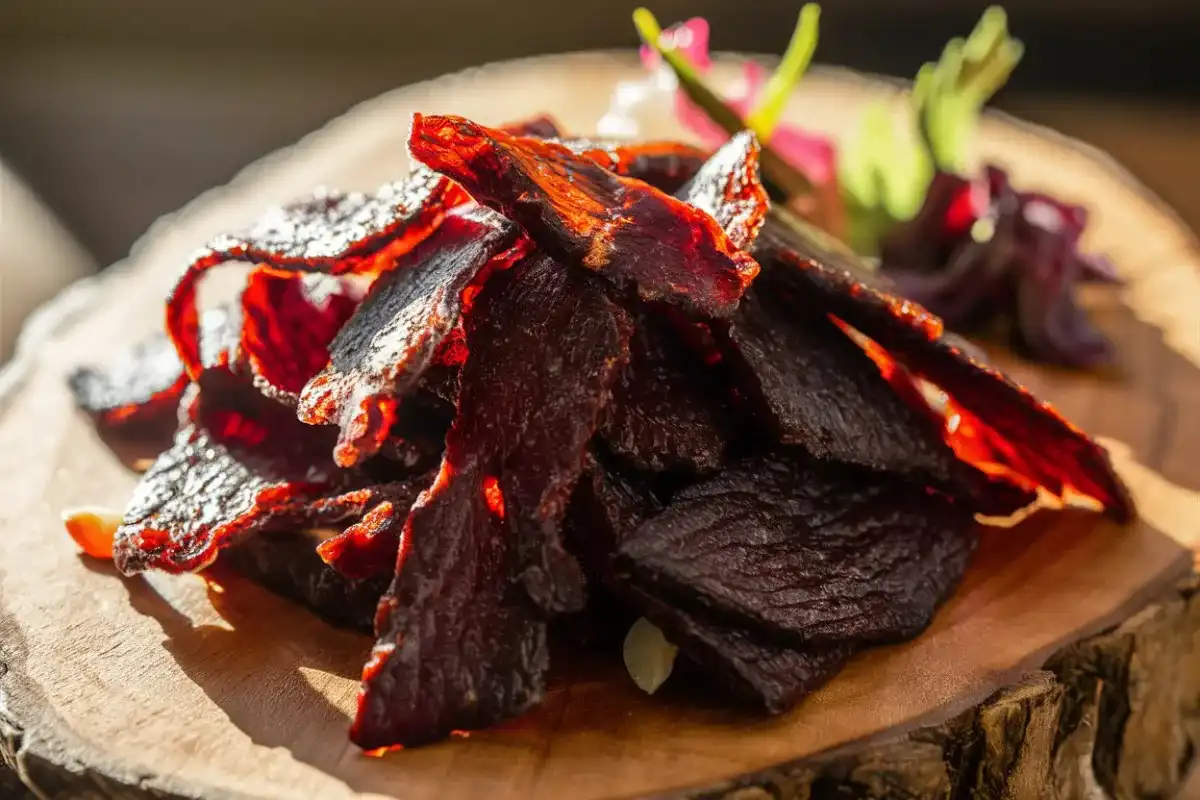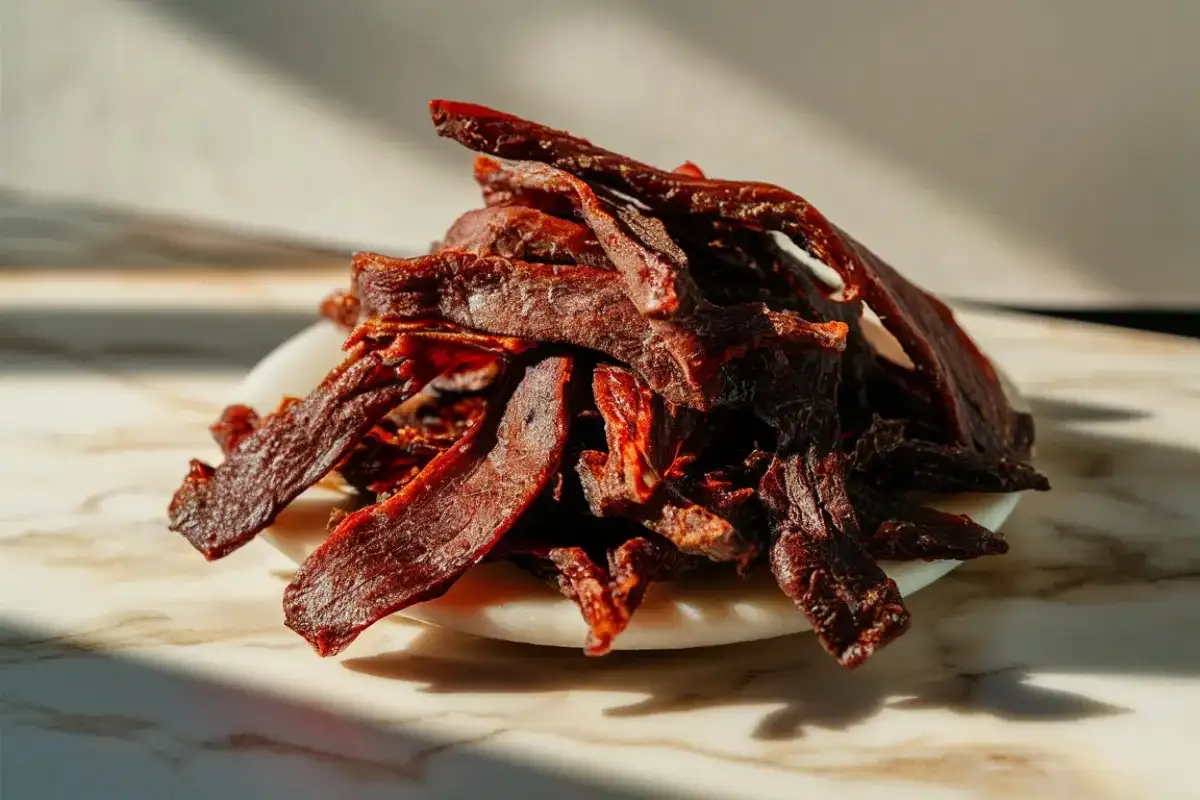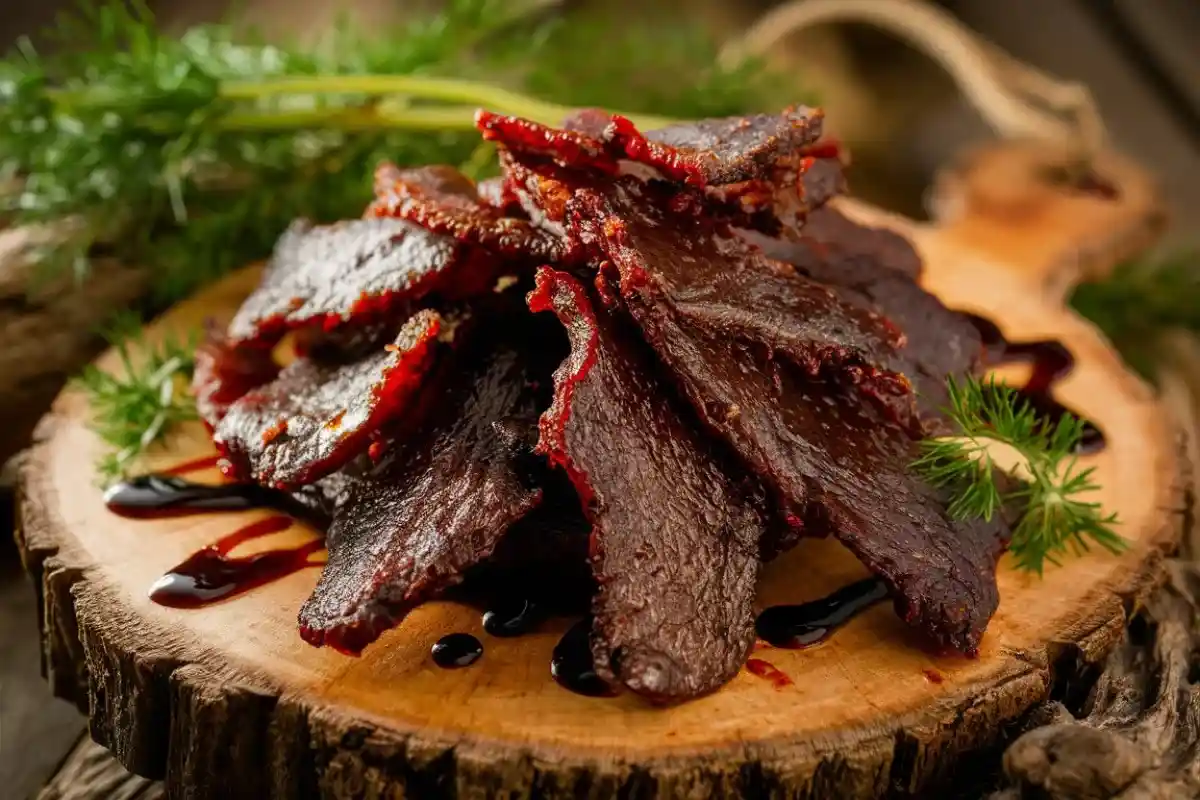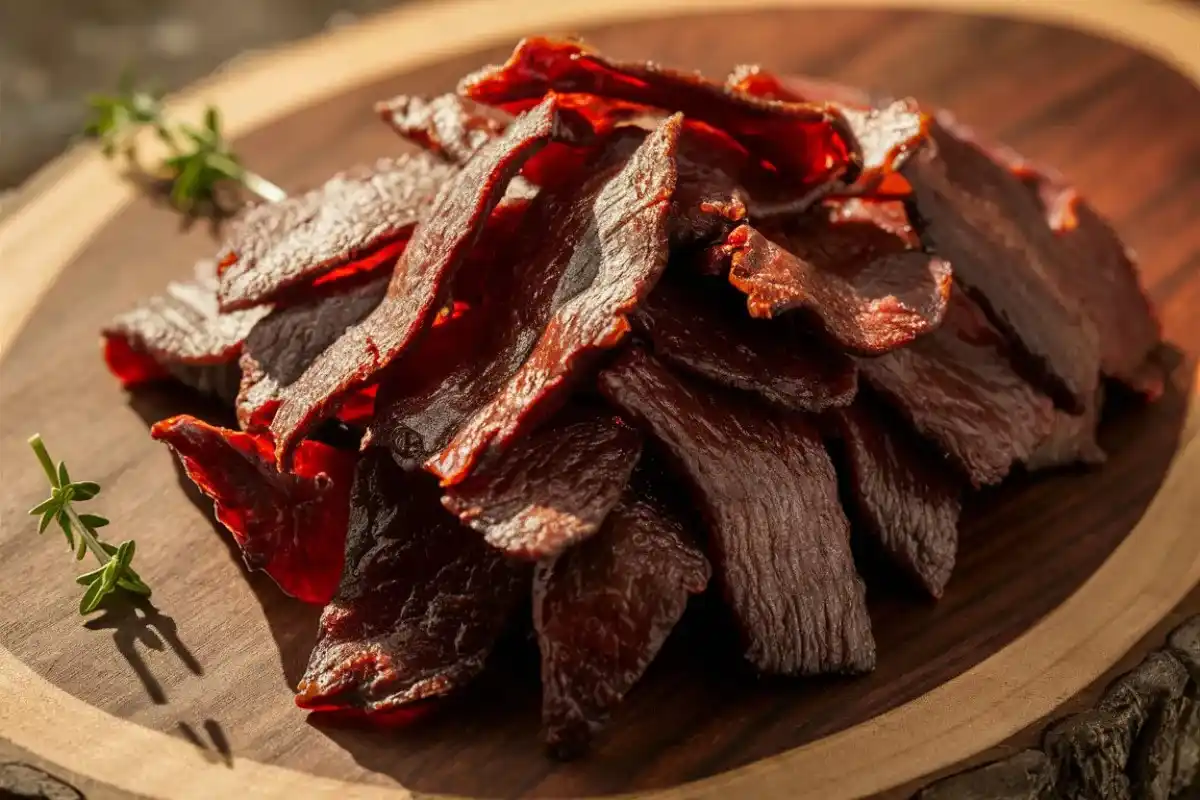Beef jerky is a popular snack enjoyed by many for its savory taste, long shelf life, and convenience. However, while it may seem like a food that could last indefinitely, beefs jerky can go bad over time. Understanding the factors that affect its shelf life, the signs of spoilage, and the best storage practices are crucial to ensuring that you enjoy this delicious snack in its best condition. In this expanded guide, we will delve deeper into how long beef jerky lasts, what causes it to spoil, and what you can do to keep it fresh for as long as possible.
Does Beef Jerky Go Bad?
Yes, beef jerky can go bad, even though it is a preserved food. Beef jerky is made by drying and curing lean strips of beefs, often with salt and other seasonings, to remove moisture and prevent bacterial growth. However, despite these preservation methods, beefs jerky is not immune to spoilage. Over time, factors like exposure to air, moisture, and temperature can degrade its quality, leading to changes in flavor, texture, and safety.
Here are some key factors that determine whether your jerky will stay fresh or spoil:
- Storage Conditions: Improper storage, such as keeping jerky in a humid or warm environment, can cause it to spoil. Mold growth can occur in moist conditions, while heat can make the fats in jerky go rancid.
- Quality of Ingredients: The quality of the meat used in jerky and any added ingredients can affect its shelf life. Low-quality meat or added sugars, for example, might speed up the degradation process.
- Packaging: Vacuum-sealed packaging or airtight containers can help extend the freshness of beefs jerky by minimizing exposure to air and moisture. However, once opened, the jerky’s shelf life decreases significantly.
To learn more about the best ways to handle various types of meats, you might explore recipes with ground beef, which provide great insights on preserving the flavor and freshness of your dishes.
How Long Does Beef Jerky Last?

The shelf life of beef jerky depends on several factors, including its packaging, storage conditions, and whether it is homemade or commercially produced. Here’s a breakdown of the different timelines:
- Unopened Commercial Beef Jerky: Typically, unopened commercial beefs jerky can last up to one year if stored in a cool, dry place. The vacuum-sealed packaging helps to protect it from moisture, air, and light, all of which can cause spoilage.
- Opened Commercial Beef Jerky: Once the package is opened, the beefs jerky should ideally be consumed within one week to ensure optimal flavor and texture. Exposure to air and moisture once the package is opened can lead to a decrease in quality.
- Homemade Beef Jerky: Homemade jerky usually does not contain the preservatives found in commercial varieties, so its shelf life is shorter. When properly dried and stored in an airtight container, homemade jerky can last for one to two months at room temperature. However, refrigeration or freezing can extend its freshness.
For more detailed information on how long different types of foods last, you can check out how long does beefs jerky last to learn about the shelf life of various jerky types.
Factors That Cause Beef Jerky to Spoil
Beef jerky is known for its durability, but certain factors can accelerate its spoilage. Understanding these factors can help you prevent your jerky from going bad too quickly:
1. Exposure to Air
One of the main causes of spoilage in beef jerky is exposure to air. When jerky is exposed to air, it can absorb moisture from the environment, which promotes the growth of mold and bacteria. Moreover, oxygen can cause the fats in jerky to oxidize, leading to rancidity. This is why it is essential to keep beefs jerky in an airtight container or vacuum-sealed packaging to prolong its freshness.
2. Humidity and Moisture
Humidity and moisture are enemies of beef jerky. Moisture in the air can make the jerky damp, which not only affects its texture but also creates a breeding ground for mold and bacteria. For example, storing jerky in a humid environment, such as near a stove or in a damp basement, can quickly lead to spoilage. To prevent this, always store your jerky in a cool, dry place away from any sources of moisture.
3. Temperature Fluctuations
Temperature plays a significant role in the shelf life of beef jerky. While beef jerky is shelf-stable, storing it in a place with fluctuating temperatures, such as a car or near a heat source, can cause the fats in the jerky to melt and become rancid. Ideally, beefs jerky should be stored at a consistent temperature, preferably below 70°F (21°C), to maintain its quality and safety.
4. Quality of Ingredients
The ingredients used to make beef jerky can also affect its shelf life. High-quality cuts of beef, free from excess fat, tend to last longer because they have less moisture content and are less likely to spoil quickly. Additionally, using curing agents like salt or nitrites can help extend the shelf life by inhibiting the growth of bacteria. On the other hand, lower-quality meats or those with higher fat content are more prone to rancidity and spoilage.
If you’re interested in learning about the best ingredients to use in your cooking, consider exploring the best cooking methods for chuck roast.
5. Packaging
Proper packaging is crucial for keeping beef jerky fresh. Vacuum-sealed packaging is highly effective in protecting jerky from air, moisture, and contaminants. Learn more about the benefits of vacuum-sealed packaging for long-term storage. However, if the packaging is damaged or improperly sealed, the jerky can be exposed to air and moisture, which accelerates spoilage. Always check the packaging for any signs of damage before purchasing or storing beef jerky.
Best Practices for Storing Beef Jerky

To ensure that your beef jerky stays fresh for as long as possible, follow these best practices for storage:
- Use Airtight Containers: Once the packaging is opened, transfer the beefs jerky to an airtight container or resealable plastic bag to minimize exposure to air. If you are storing a large batch, consider vacuum-sealing smaller portions to extend their shelf life.
- Store in a Cool, Dry Place: Keep beef jerky in a cool, dry place away from direct sunlight and heat sources. A pantry or cupboard is ideal. Avoid storing jerky in places with high humidity, such as near the stove or in a damp basement.
- Refrigerate or Freeze for Longer Storage: If you have a large quantity of jerky or want to store it for an extended period, consider refrigerating or freezing it. When freezing, use an airtight container or vacuum-sealed bag to prevent freezer burn. Jerky can last up to six months in the freezer.
- Check Regularly for Signs of Spoilage: Even with proper storage, it is essential to check your beef jerky regularly for any signs of spoilage, such as mold, discoloration, or a sour smell. If you notice any of these signs, discard the jerky immediately.
Signs That Beef Jerky Has Gone Bad
To ensure that you are consuming fresh and safe beef jerky, it’s essential to be aware of the signs of spoilage. Here are some key indicators that your jerky may have gone bad:
1. Unpleasant Odor
Fresh beef jerky should have a smoky, savory aroma. If your jerky has a strong, rancid, or sour smell, it is a clear indication that it has spoiled. An unpleasant odor is often the first sign that your jerky is no longer safe to eat.
2. Visible Mold or Discoloration
Mold growth or discoloration is a sure sign that your beef jerky has gone bad. Mold can appear as green, white, or black spots on the surface of the jerky. Discoloration, such as an uneven color or dark patches, can also indicate spoilage. If you notice any of these signs, it is best to discard the jerky immediately.
3. Changes in Texture
Fresh beef jerky should have a chewy texture that is firm but not overly hard. If your jerky has become excessively dry, brittle, or sticky, it may be a sign of spoilage. Changes in texture can occur due to exposure to air, moisture, or improper storage conditions.
4. Off Taste
If your beef jerky tastes off, sour, or rancid, it is a definite sign that it has gone bad. While it may be tempting to taste jerky to determine its freshness, it is not recommended, as spoiled jerky can cause foodborne illnesses. Always trust your senses if it smells, looks, or feels off, it’s best to throw it away.
5. Past Expiration Date
While the expiration date on the package is not always a definitive indicator of freshness, it provides a general guideline for how long the jerky should remain safe to eat. If the jerky is past its expiration date, be extra cautious and check for other signs of spoilage before consuming it.
Tips for Maximizing the Shelf Life of Beef Jerky

To enjoy your beef jerky for as long as possible, follow these tips to maximize its shelf life:
- Purchase High-Quality Jerky: When buying beef jerky, choose high-quality products made with lean cuts of beef and minimal preservatives. Avoid jerky with a high fat or sugar content, as these can contribute to quicker spoilage.
- Use Vacuum-Sealed Packaging: Store your jerky in vacuum-sealed bags to minimize exposure to air and moisture. If you make homemade jerky, consider investing in a vacuum sealer to ensure the longest shelf life.
- Keep It Dry: Moisture is the enemy of beef jerky. Always store your jerky in a dry environment and avoid exposing it to humidity. Consider using silica gel packets or desiccants in your storage containers to absorb excess moisture.
- Rotate Your Stock: If you have a large stockpile of beef jerky, practice the “first in, first out” rule by consuming the oldest packages first. This helps prevent jerky from sitting for too long and going bad.
- Avoid Frequent Temperature Changes: Store beef jerky in a place with a stable temperature. Avoid leaving it in areas with frequent temperature changes, such as cars or near heat sources.
Frequently Asked Questions
1. How can I tell if my beef jerky has gone bad?
Look for signs such as a sour or rancid smell, visible mold or discoloration, changes in texture (too dry or sticky), and an off taste. If you notice any of these signs, it’s best to discard the jerky.
2. Can you freeze beef jerky to extend its shelf life?
Yes, freezing beefs jerky can significantly extend its shelf life. Make sure to store it in an airtight container or vacuum-sealed bag to prevent freezer burn and preserve its quality for up to six months.
3. What is the best way to store opened beef jerky?
To keep opened beefs jerky fresh, store it in an airtight container or resealable bag in a cool, dry place. You can also refrigerate or freeze it for extended storage.
4. Is it safe to eat beef jerky past its expiration date?
While it might still be safe shortly after the expiration date, always check for signs of spoilage like mold, off odors, or unusual texture. If any are present, discard the jerky.
5. Why does beef jerky sometimes get moldy?
Mold can develop on beefs jerky if it is exposed to moisture or stored in a humid environment. To prevent mold, store jerky in a dry place and use vacuum-sealed packaging to minimize air exposure.
Conclusion
By understanding the factors that affect the shelf life of beef jerky and taking the necessary steps to store it properly, you can enjoy this tasty snack for a long time. Always be mindful of storage conditions, use airtight packaging, and regularly check for signs of spoilage. With these tips, you can ensure that your beef jerky stays fresh, flavorful, and safe to eat for as long as possible.

